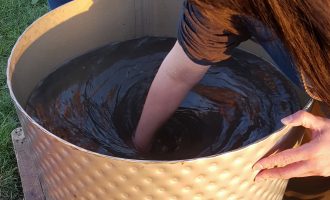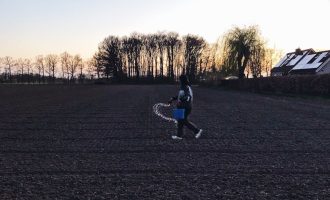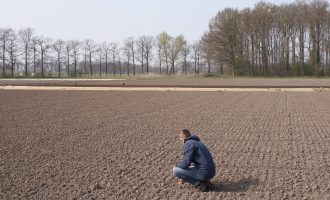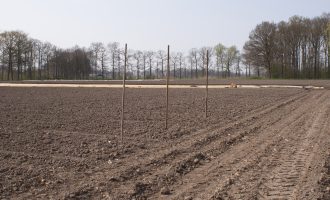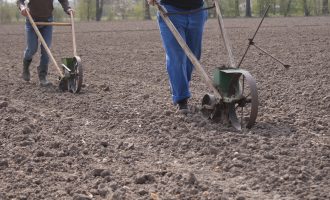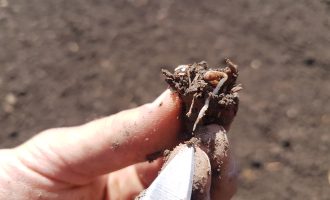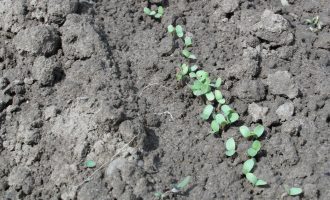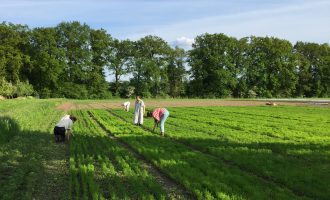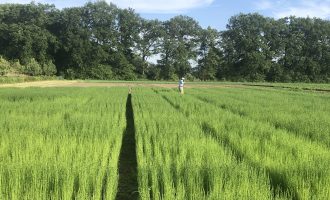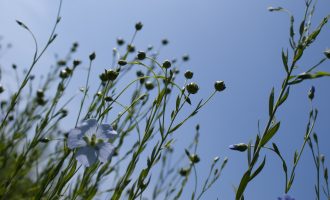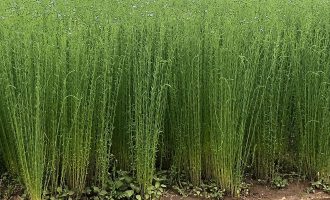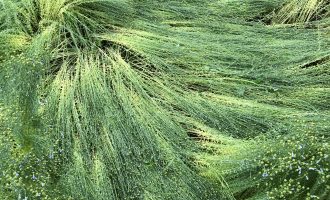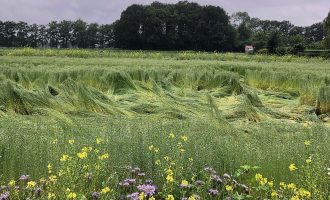flax cultivation, shared stewardship 2021, ekoboerderij de lingehof, hemmen
In 2021 the Shared Stewardship entered a new flax cultivation season with a community of thirty Linen Stewards; some with experience from the previous season, as well as new members joining the collective exploration. Based on an orientation of the group’s needs and wishes, the Linen Stewards decided to return to Ekoboerderij de Lingehof to cultivate three contemporary flax varieties from Van de Bilt zaden en vlas bv, Felice, Christine and Nathalie, alongside smaller beds of heritage varieties from Fries Werkverband, Friese Witbloeivlas, Fries Paarsbloeivlas and Natasja. The Linen Stewards followed the biodynamic principles practised at the farm, and during the season shared rituals of their own, including song.
-
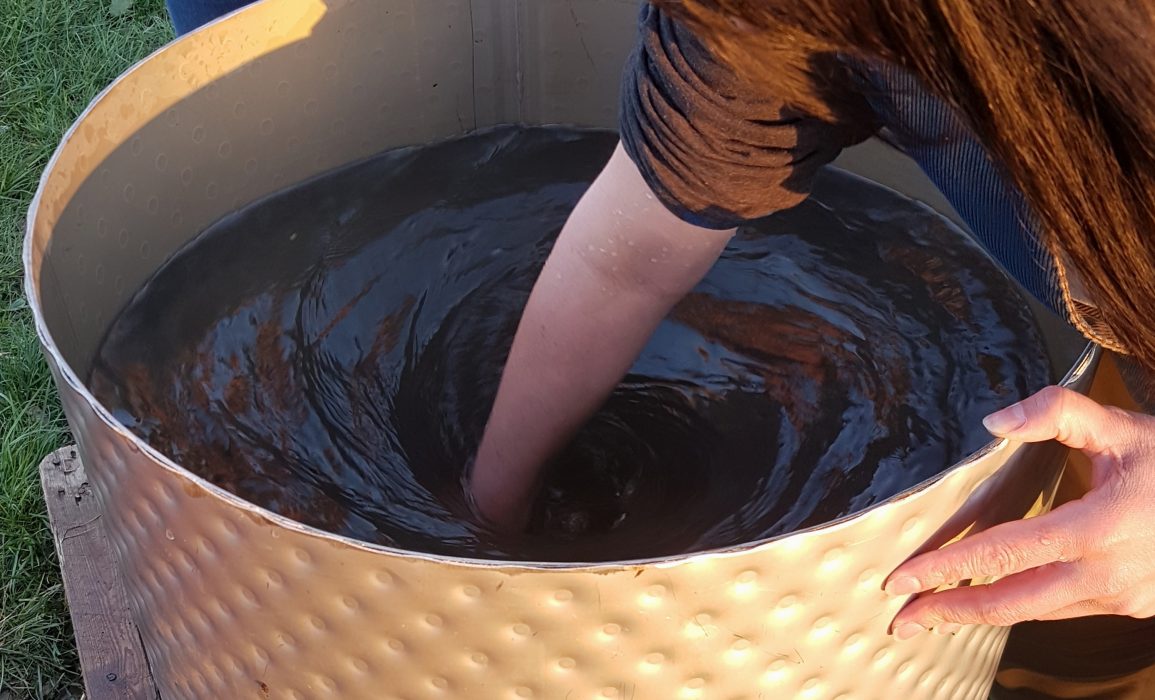
bonding with biodynamic energy
The Linen Stewards were invited to prepare and apply a horn manure preparation, to enhance the life of the soil and the relationship between soil and plants. Cow manure that has been buried inside a cow horn in the field during the winter months is stirred into a vat of water by hand, creating a whirlpool, in clockwise and counterclockwise motions. Photo by Eveline Nales.
-
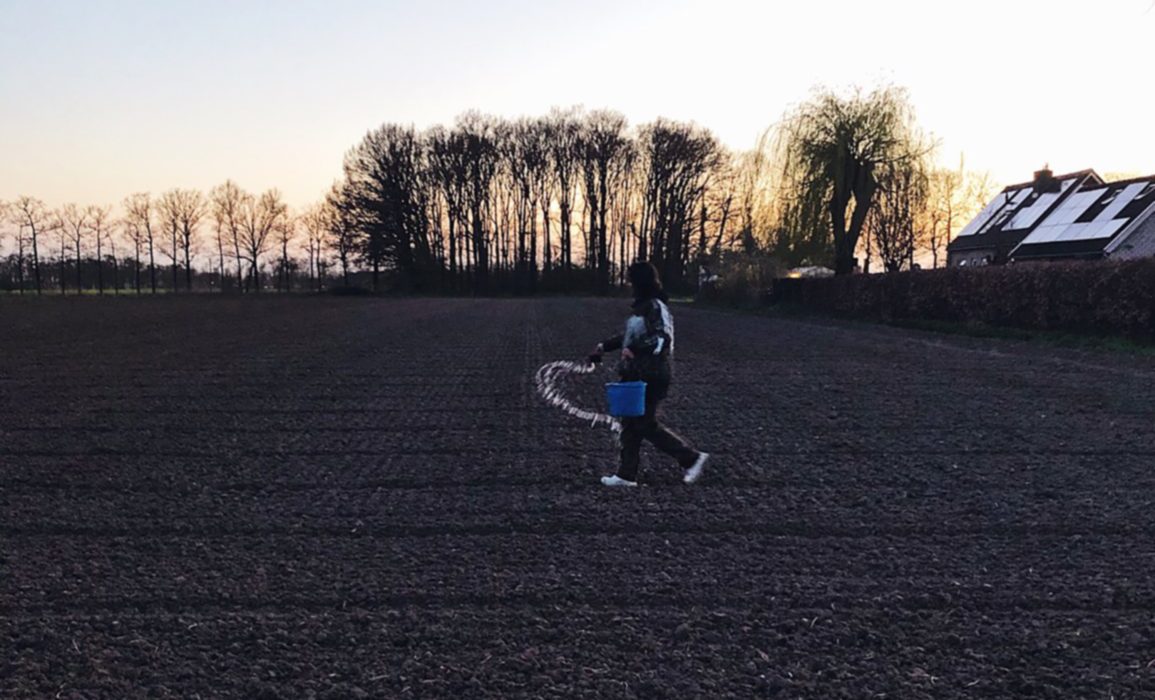
spreading the preparation on the field
After the hour-long process of stirring, the stewards spread the biodynamic horn manure preparation – and their intentions for the season to come – on the field, in time with the sunset. The practice of applying preparations recognises the dynamic energetic connection between the earth, living beings, the environment and the cosmos. Photo by Lotte Holterman.
-
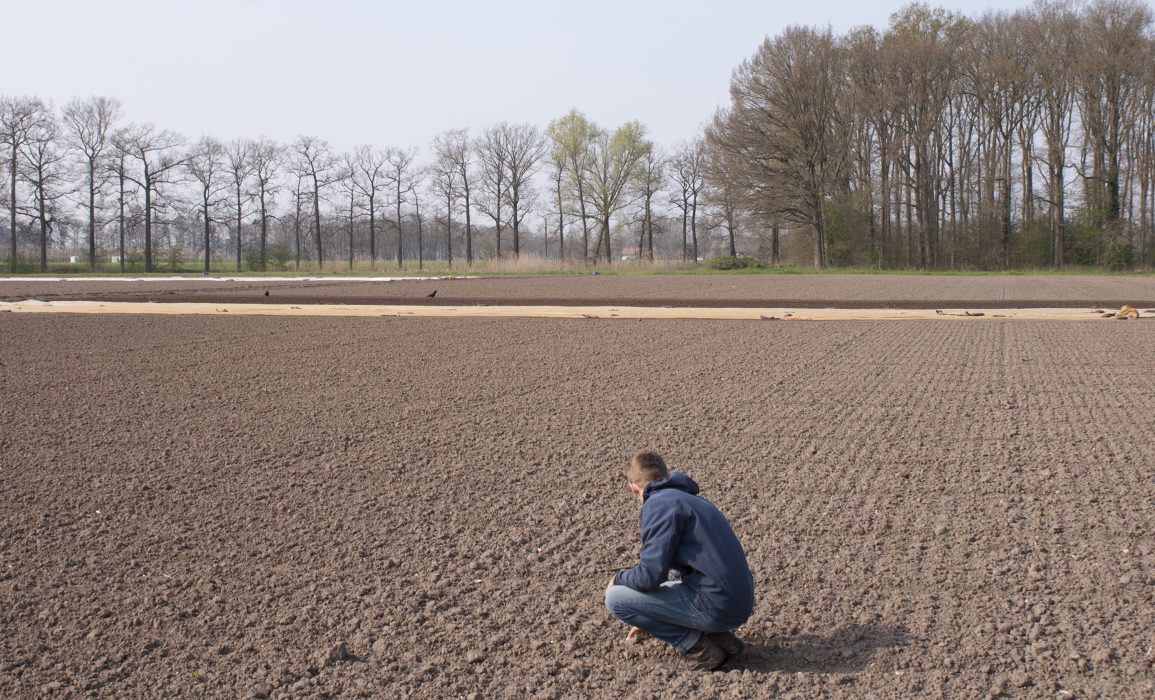
readying the soil for sowing – day 1
Traditionally, flax is sown 100 days following the new year and takes 100 days to grow. Taking into account the energy of the moon, the weather and the soil, the optimal biodynamic conditions aligned on April 20, 2021. On the day of sowing the Linen Stewards gave their field a final hoe to loosen up the dried clay, before setting out ‘beds’ for each flax variety.
-
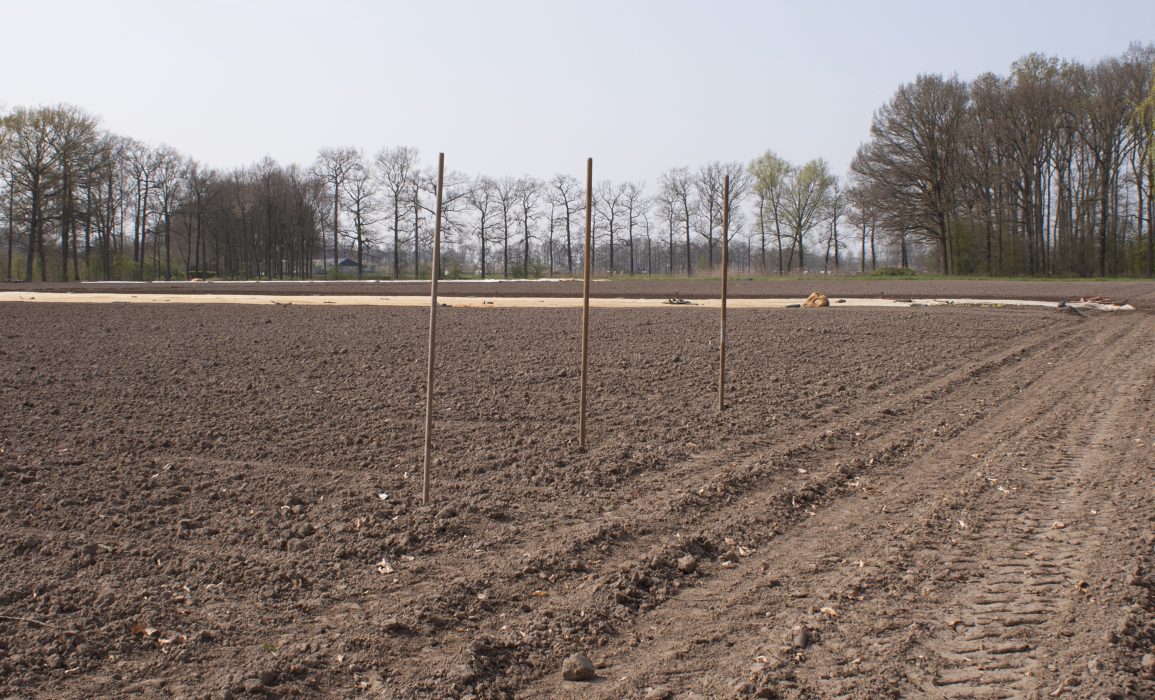
staking out the seed beds – day 1
Guides indicating the distance between rows were staked out to aid sowing in straight lines, with the intention of stimulating even flax growth. The ‘beds’ for the flax varieties were marked, taking into account wider paths for access. In the background, the vegetable beds cultivated by our field neighbours Tuinderij de Stroom lie blanketed against the still colder temperatures.
-
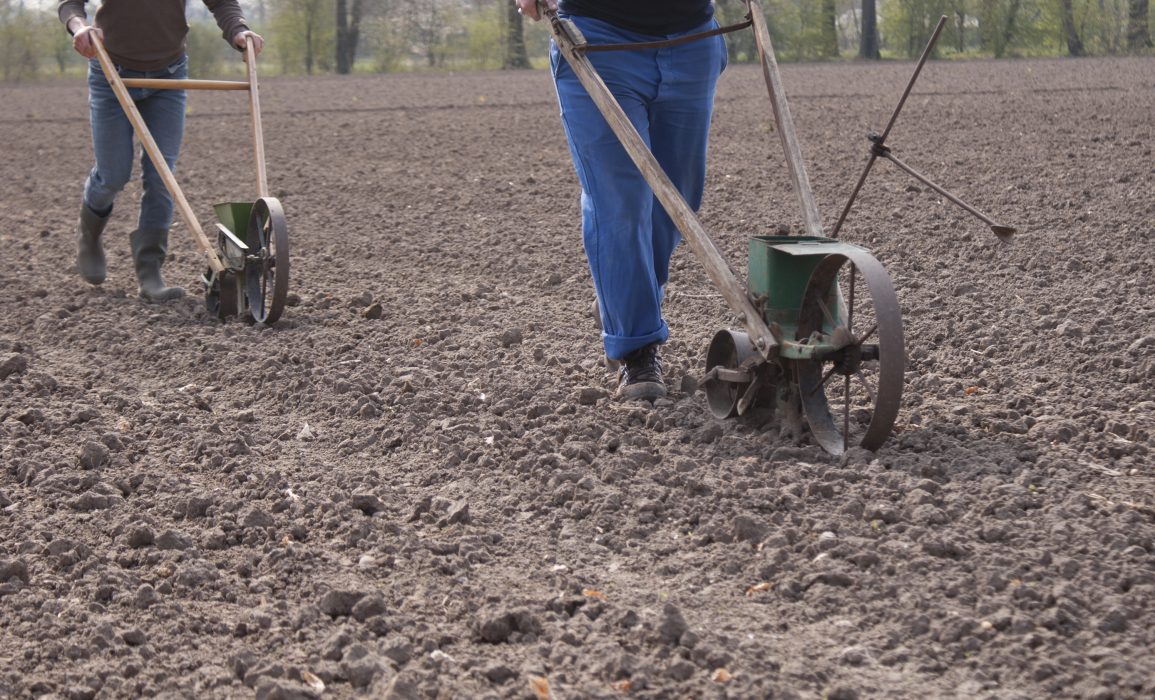
sowing the flax – day 1
A group of five Linen Stewards contributed their energy and concentration for a full day to sow the flax field on foot using a hand-driven seed drill, alongside and with the guidance of cultivation supervisor Talis Bosma.
-
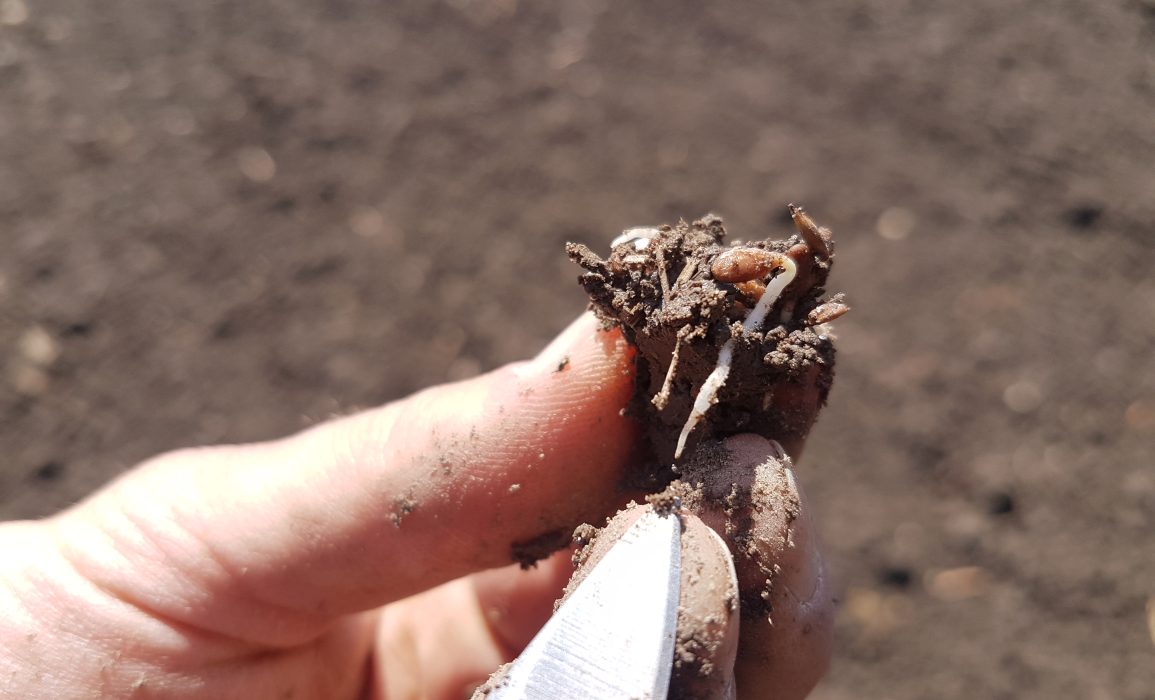
germinating flax seeds – day 7
At this stage our flax seedlings are yet to emerge, but there is already noticeable activity underground. Flax cultivation has the potential to contribute to sustaining biodiversity in various ways, including aerating the soil. Photo of a flax sprout from the Linen Stewards’ field at Ekoboerderij de Lingehof, courtesy of Eveline Nales.
-
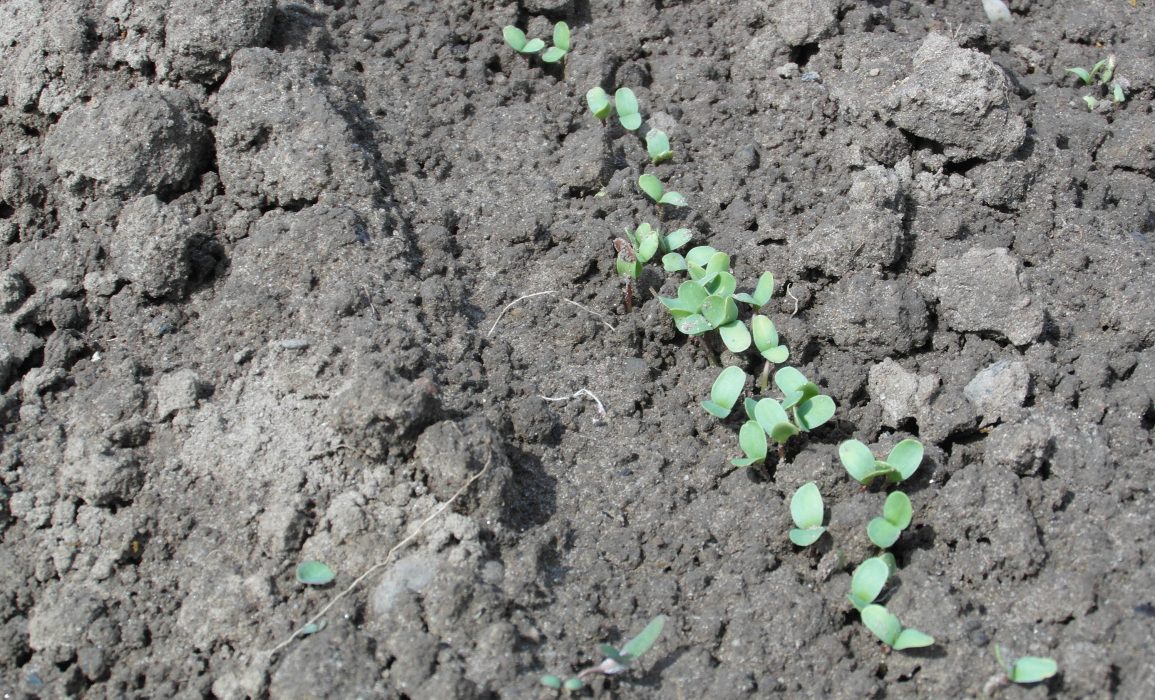
emerging flax seedlings – day 8
Soil conditions including moisture levels play an essential role during germination and in further stages of growth. The Linen Stewards’ flax, sown on clay ground, received a little extra care this week. Their generous neighbours at Tuinderij de Stroom lightly irrigated the field, since the weather had been exceptionally dry for the time of year. Photo by Eveline Nales.
-
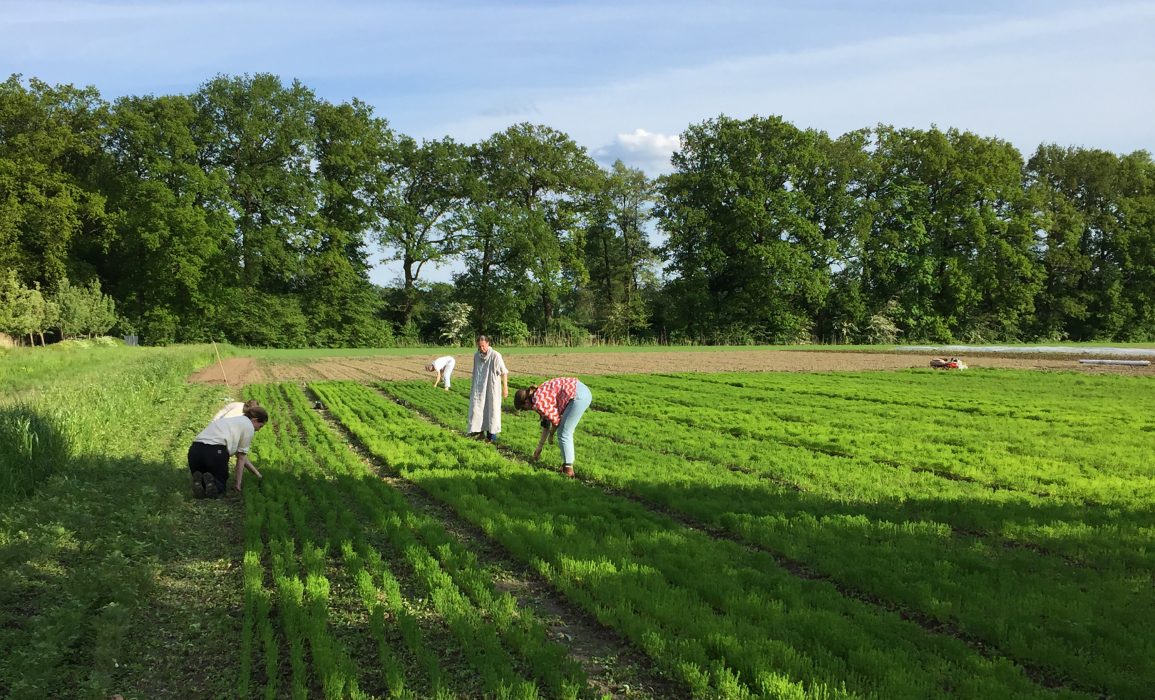
weeding – day 38
The flax got to a thriving start, thanks to the arrival of necessary rain and sun, and so did the weeds! It is crucial to remove any undesired plant growth during this early stage of cultivation. Once the flax reaches a certain height, disturbing it can affect fibre development.
-
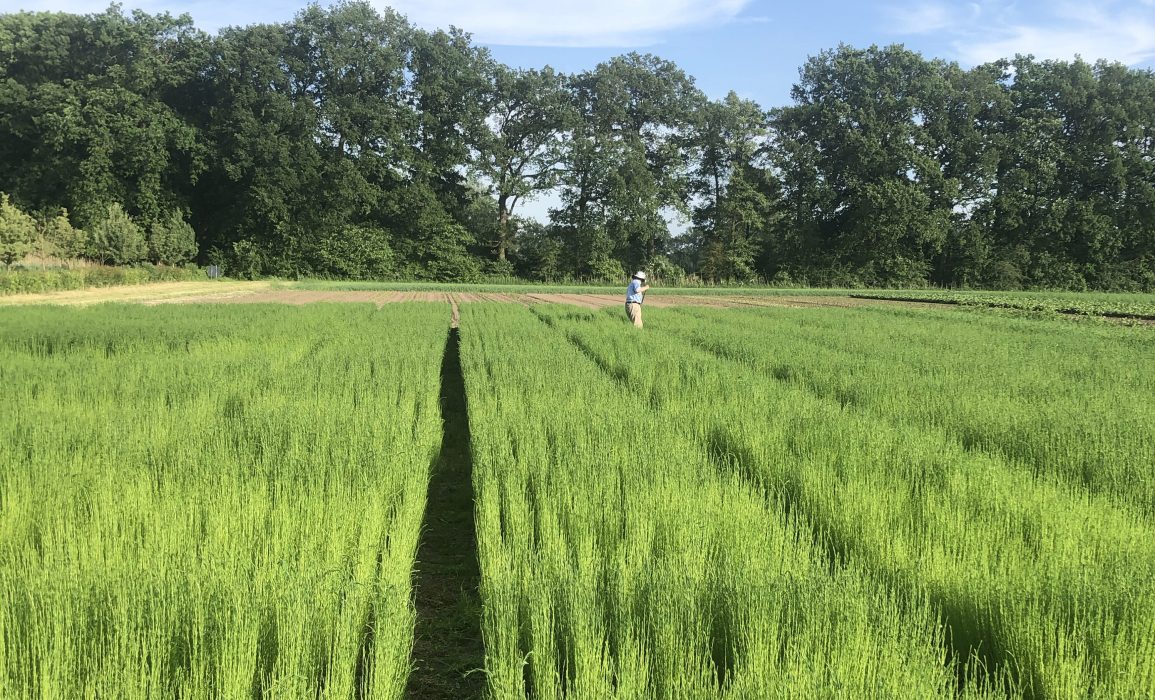
weeding – day 53
The Linen Stewards committed their available hours to weed by hand, gathering on the field at intervals with the intention of clearing the soil to the best of their ability. The rapid growth of the flax plants was noted. With ideal growing conditions, flax is said to grow a ‘fist’ overnight. Photo by Melanie Bomans.
-
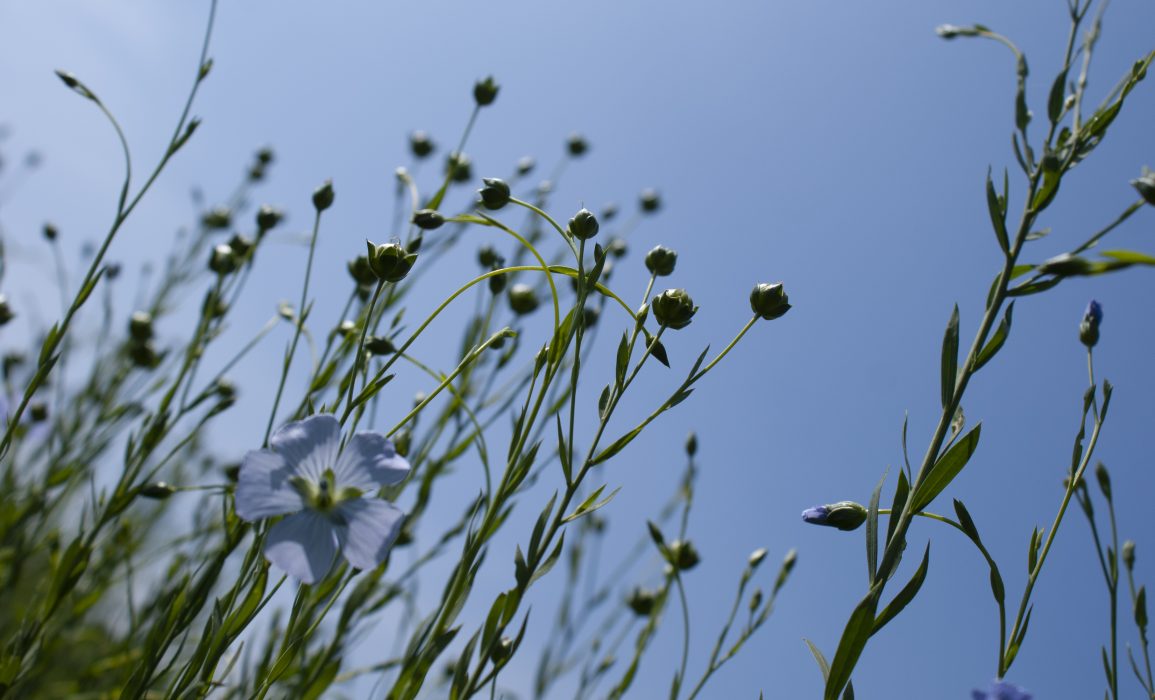
flax bloom – day 57 to 71
The flax started blooming roughly 57 days after seeding. Unusually cold and wet weather resulted in the flax continuing to grow and flowers being produced beyond the usual bloom period. Once the flax has bloomed, seed pods begin to form and the plant stops growing, getting closer to the harvest.
-
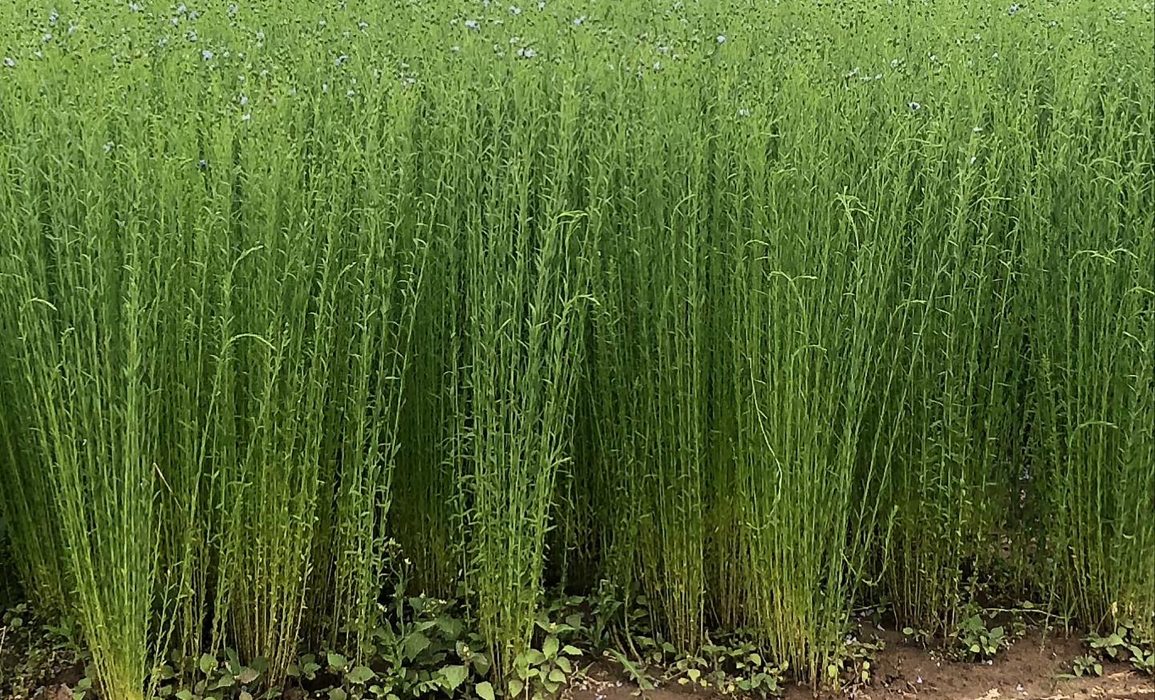
water content – day 65
In contrast to last year’s continual dry heat, this season had abundant rainfall. The crop outlook was promising, reaching desired fibre flax lengths. The flax plants were late to yellow and drop their leaves – the sign that they have stopped growing and are ripening. According to a life-long flax farmer, the flax was still full of ‘levenssappen’ (life juices). If harvested too soon, the moisture in the stem could adversely affect the retting process, and cause the flax to rot instead. Photo by Melanie Bomans.
-
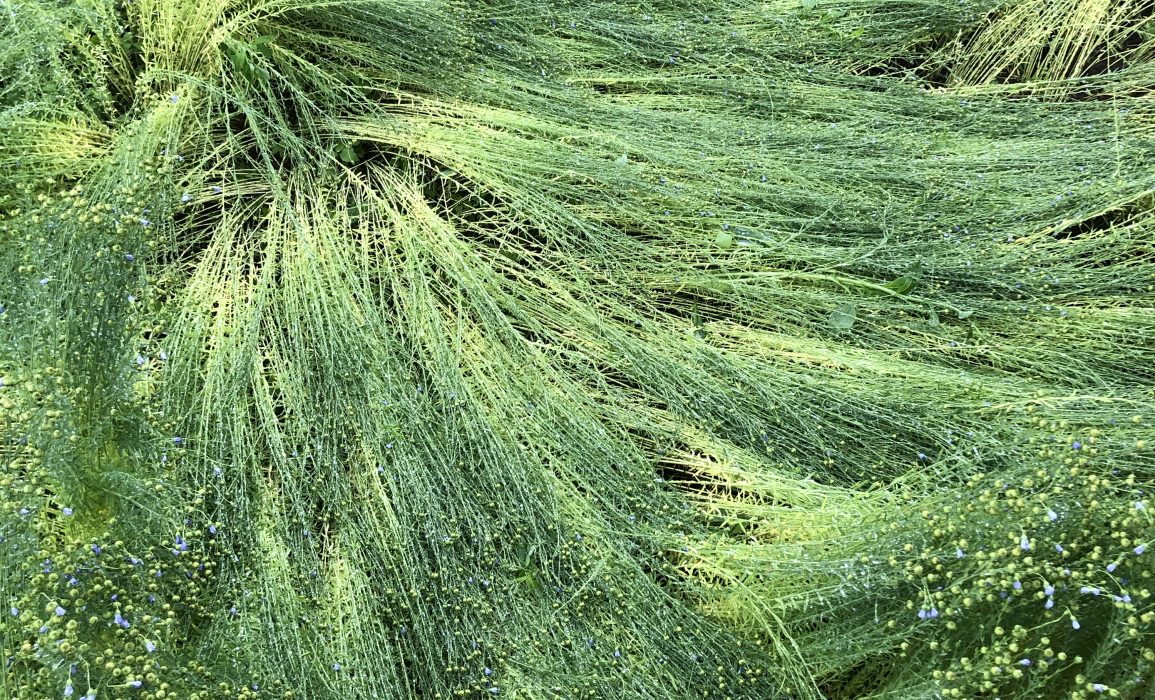
climate pressure – day 71
Weeks of intermittent rain and late spring storms put pressure on the tall and slender maturing flax stalks, with the risk of the flax falling over under the weight of accumulating raindrops. Stewards heading to the field to maintain the paths ahead of the harvest were met with this alarming sight. With enough wind or a dry spell, the flax plant can potentially restore itself, if the stem has remained intact. Photo by Melanie Bomans.
-
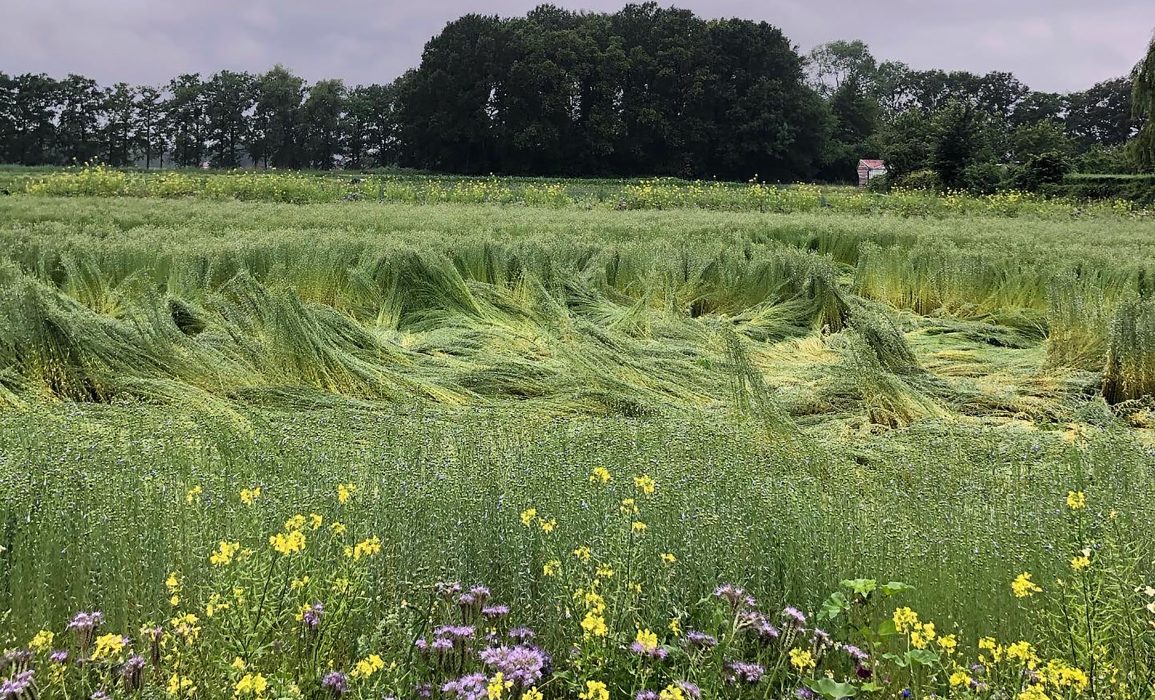
unpredictable circumstances
At the moment of this photo, one-sixth of the flax on the Linen Stewards’ field lay on the ground, at risk of rotting. Having heard from flax farmers who endured significant damage to 98% of their crop as a result of the storms, the Linen Stewards considered themselves lucky so far, keeping a close eye on weather forecasts in anticipation of the harvest. Photo by Melanie Bomans.
